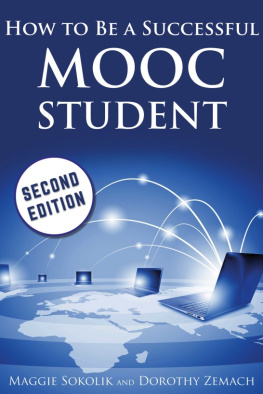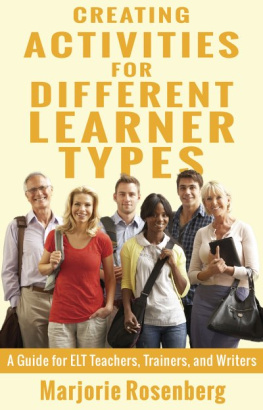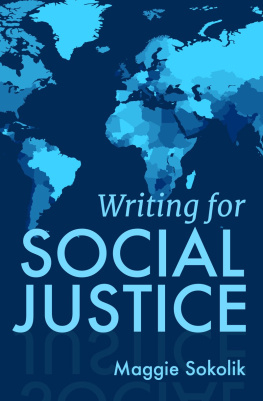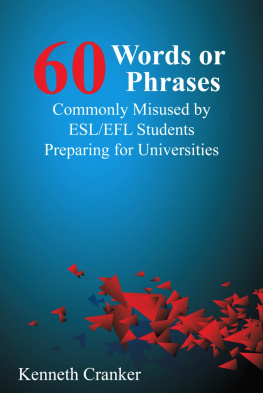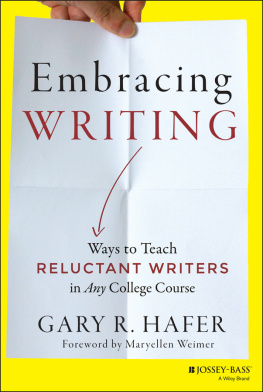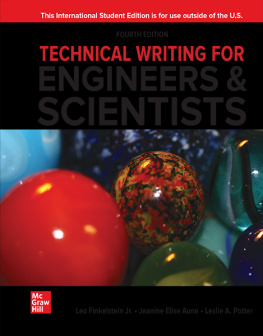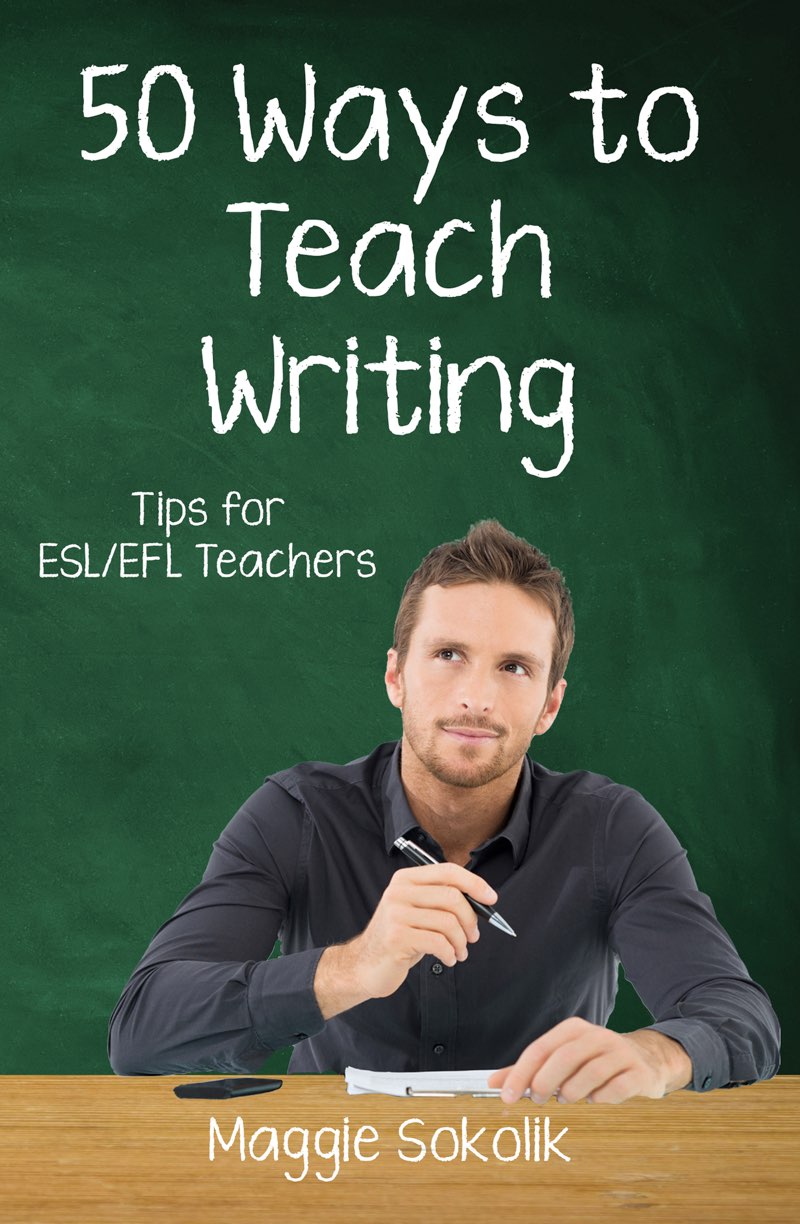All rights reserved. No part of this publication may be reproduced, stored in or introduced into a retrieval system, or transmitted, in any form, or by any means (electronic, mechanical, photocopying, recording, or otherwise) without the prior written permission of the copyright owner.
Edited by Dorothy E. Zemach. Cover design by DJ Rogers.
Published in the United States by Wayzgoose Press.
Most teachers use a textbook in class, which provides both instruction and practicebut, often, not enough practice. Students need to practice again and again, and in different ways, not just to keep their interest but to both learn and remember.
This book gives you ideas to help your students practice writing in English. It can be used with any textbook, or without any textbook at all. It tells you how to adapt and extend exercises; it gives you prewriting, topics, and revision activities that can be added to any class.
Not every idea will work for every student or for every class. Thats why there are fifty. We feel sure that many of the ideas presented here will bring you results if you try them sincerely and practice them regularly.
Here is a suggested method for using this book:
- Read through all of the fifty tips without stopping.
- Read through the tips again. Choose five or six that you think might work for your class. Decide when you will try them.
- Choose different types of ideas: Some that can be done independently, and some that work along with your textbook; some that focus on creative writing, and some that focus on specific skills.
- Each time you use one of the ways, make a note about how well it worked for you and why. Remember that most of the tips will work best if you use them several times (or even make them a habit). Dont try a tip only once and decide its not good for your students. Give the tips you try at least a few chances.
- Every few weeks, read through the tips again, and choose some new ones. Discontinue using any methods that are not working for you and your students.
Finally, consider trying some of the other books in our Fifty Ways to Teach series. No one skill in English is really separate from the others. Speaking, listening, reading, writing, vocabulary, and grammar are all connected. Students who improve in one area will almost always improve in other areas, too. The series also includes special volumes for teaching young learners, teenagers, using technology in the classroom, and professional development.
This book is for teachers who are new to working with English language learners, new to teaching writing, or are simply looking for more creative and engaging writing activities for their English classes. This isnt a presentation of research and pedagogy, but a list of writing activities and tips for making these activities more effective. Many of the ideas are based on a process approach to writingthat is, it looks at writing as a system of planning, drafting, and revision.
Of course, not all these tips may work for your class exactly as written. It is always beneficial to consider an idea and think about how you could adapt it to your own context. When you read a tip, think about how you could change it to fit your students ages, levels, cultural backgrounds, and interests.
You might also try completing the task described in the tip yourself. This will help you anticipate questions your students might have, or know in advance how long it might take for them to complete it. Of course, you should feel free to adapt the activities in any way you like.
This book is divided into three categories, which represent the stages of process writing:
- Pre-writing and planning
- Writing topics and strategies
- Editing and revising
The process approach, however, is not linear; students might plan, write, rewrite, and re-plan and rewrite recursively, or in any order, as shown in the figure below.
The Process Approach
One piece of advice: As you plan your writing assignments, think about your last assignment first. That is, what is the final assignment that your students will be asked to complete? What assignments do they need to do along the way to finish that assignment successfully? Thinking about how to plan and build your assignments will help your students achieve success; it will help you determine which of the tips will be most useful for your class.
Finally, whether you are using this book as part of a writing course, or you are using writing as part of a multi-skills course, you should find something of use here. If you have ideas or amendments to the tips here, please send them to us at editor@wayzgoosepress.com for consideration in future editions.
You can find photocopiable pages in the paper version of this book, or PDFs of worksheets to use with some of the tips at: anglofile.com/50ways/ . You are free to photocopy and distribute these worksheets to your students.
I
Prewriting, Planning, and Strategies
Prewriting, planning, and developing strategies are important steps in the writing process. Students will find it easier to complete a writing assignment if theyve spent some time brainstorming, taking notes, and working together to think about assignments before they begin any formal writing.
Read through these possibilities for prewriting or planning activities. Choose one or two to use before you give your next writing assignment.
Remember to keep notes on what goes well and what needs improvement, so the next time you use a tip, you are ready to present it in an even better way.
Brainstorm/Make a List
Brainstorming is a good activity for students who need to generate ideas for writing.
Ask students to consider a particular topic youve given them (or that they have created themselves). Then, they should list everything they want to say about it. Hierarchy is not important herethe idea is to get down as many ideas as possible. Students can organize, create hierarchies, or outlines, after they create their lists.
Example
Topic: Healthy lifestyle


